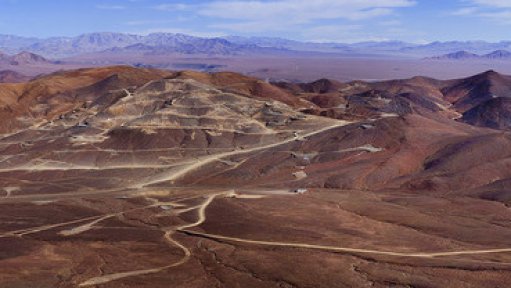
Canadian base metals miner Capstone Mining is aiming to cash in on the shortage of high-quality, large-scale copper projects by selling a portion of its Santo Domingo iron oxide-copper/gold project, in Chile.
The Vancouver-based company on Monday announced the start of a strategic process to “explore alternatives” for the project, following the release of a positive technical report, which attached an after-tax net present value of $1.03-billion and an internal rate of return of 21.8% to the project.
The report updates project economics contained in the 2014 feasibility study and highlights how the project benefits from lower power costs and several engineering changes, including the use of desalinated water instead of seawater.
“This positive technical report reconfirms the value of Santo Domingo as a desirable copper-iron-gold project that has an approved environmental impact assessment in a mining-friendly jurisdiction with local community support," Capstone president and CEO Darren Pylot said in media statement. In addition, Santo Domingo also has the maritime concession for a new port for the export of copper and iron concentrates.
Pylot stated that Capstone aimed to have Santo Domingo construction-ready by early 2020.
The technical report estimates that the mine would cost $1.51-billion to build – an 11% decrease from the feasibility study – and that it would be paid back in 2.8 years.
Over its 17.9-year mine life, Santo Domingo would produce an average of 134-million pounds a year of copper, 4.2-million tonnes a year of iron concentrates and 17 000 oz/y of gold.
In a co-product basis, C1 cash cost is estimated at $1.38/lb of payable copper produced and $38.88/t of magnetite iron concentrate. Total life-of-mine operating costs at $5.57-billion is lower than the 2014 feasibility study, mainly owing to a reduction in the price of electricity in Chile.
Further, Capstone announced that it would consider additional opportunities at Santo Domingo, including the potential for adding a cobalt recovery circuit to produce cobalt as a byproduct. It would also undertake additional metallurgical test work with the aim of improving told recoveries.
Other opportunities include using autonomous equipment and sharing infrastructure with other parties.
Capstone owns 70% of Santo Domingo and Korea Resources the balance.
The companies would also consider the potential for streaming opportunities given the gold reserve and cobalt resource to help finance the project.